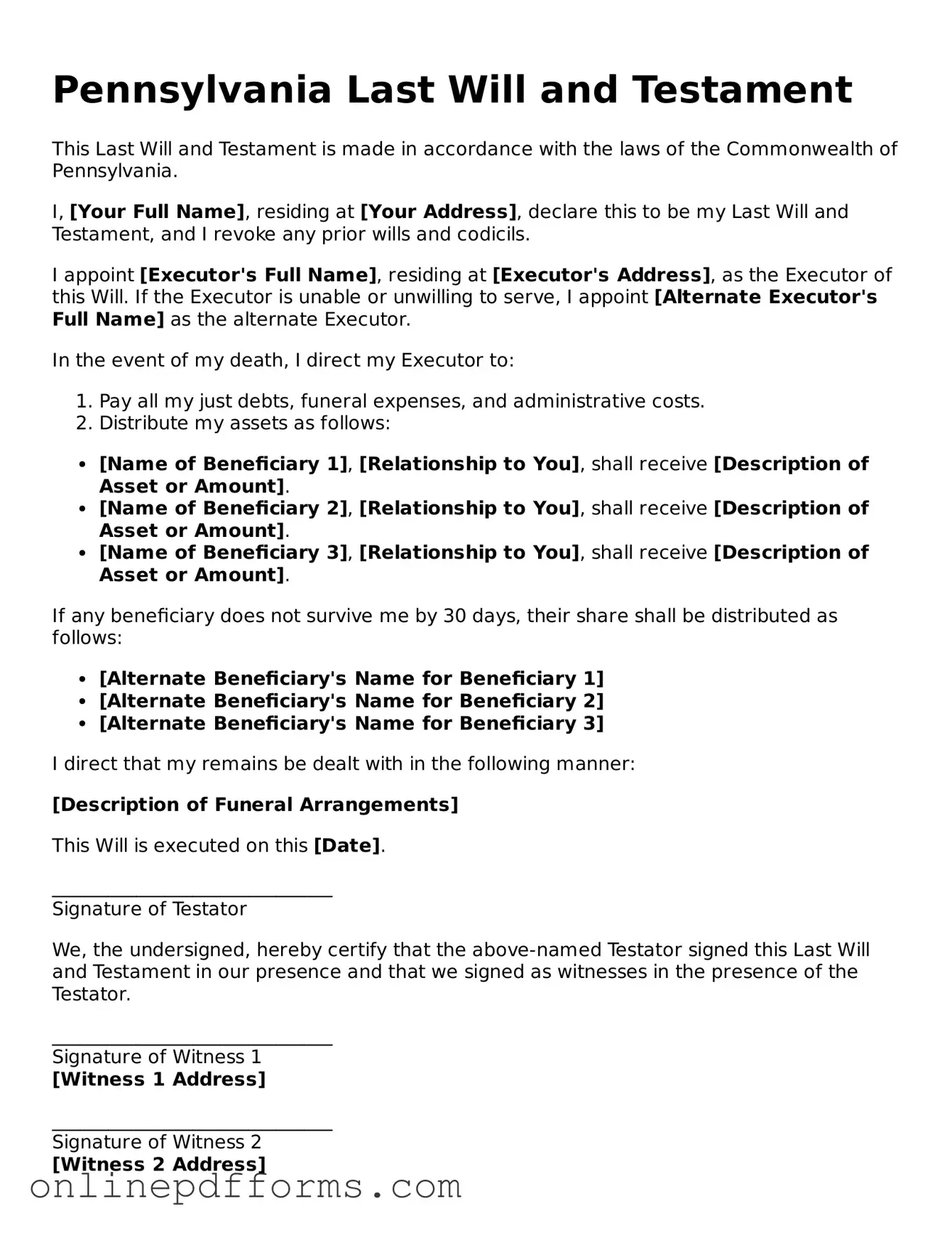The Pennsylvania Last Will and Testament form is similar to a Living Will. A Living Will outlines an individual's preferences regarding medical treatment in situations where they are unable to communicate their wishes. Both documents serve to express personal desires, but while a Last Will and Testament deals with the distribution of assets after death, a Living Will focuses on healthcare decisions during a person’s lifetime. Each document ensures that an individual's intentions are respected, albeit in different contexts—one for financial matters and the other for health care choices.
Another document comparable to the Last Will and Testament is the Durable Power of Attorney. This legal instrument allows a person to designate someone else to make decisions on their behalf if they become incapacitated. Like a Last Will, it is a means of ensuring that personal wishes are followed, but it does so during a person’s life rather than after death. Both documents provide clarity and direction, helping to avoid potential disputes among family members or loved ones regarding one's wishes.
When dealing with various types of transactions, it's essential to have the right documentation to facilitate the process. For instance, the Auto Bill of Sale Forms serve as a useful tool for properly recording the sale and transfer of ownership, ensuring that all parties involved have their rights protected and responsibilities clear.
The Revocable Trust shares similarities with the Last Will and Testament in that both are used for the distribution of assets. A Revocable Trust allows an individual to place their assets in a trust during their lifetime, which can be managed by a trustee. Upon the individual's death, the assets in the trust are distributed according to the terms set forth in the trust document. While a Last Will goes through probate, a Revocable Trust typically avoids this process, providing a quicker and more private transfer of assets to beneficiaries.
Lastly, the Codicil serves as an amendment to an existing Last Will and Testament. It allows an individual to make changes or updates without drafting an entirely new will. This document can address various issues, such as adding new beneficiaries or altering asset distributions. Both a Codicil and a Last Will work together to ensure that an individual's final wishes are accurately reflected and legally binding, offering a means to adapt to changing circumstances over time.
